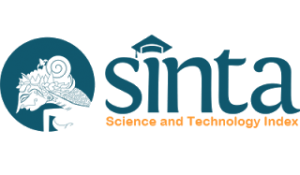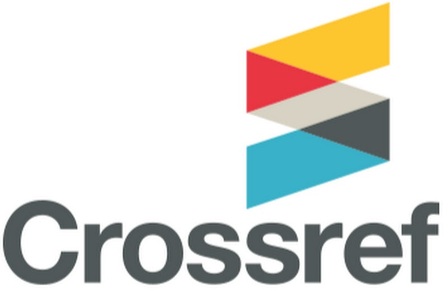Impact of social comparison and peer pressure on iphone consumer happiness and innovativeness
(1) Universitas Bengkulu
(2) Universitas Bengkulu
(*) Corresponding Author
Abstract
In the era of rapid technological advancement, the conventional use of smartphones has undergone a transformative paradigm shift. The presence of Apple's iPhone has become a significant entity surpassing mere communication functions. This research explores the dynamics linking social comparison, peer pressure, consumer innovativeness, and user satisfaction in the context of iPhone usage. Engaging 319 iPhone users in Indonesia through a comprehensive online survey, data was collected, and 150 respondents met the specified criteria. The study employs Partial Least Squares analysis using the SmartPLS4 software. Empirical findings reveal a positive correlation between social comparison and peer pressure, exerting a substantial influence on consumer innovativeness. Interestingly, social comparison also has a positive impact on consumer happiness. However, the research finds that while peer pressure significantly contributes to consumer innovativeness, it does not affect consumer happiness. This investigation underscores the crucial role of social comparison and peer pressure in shaping consumer innovativeness and happiness. The study elucidates the complex interaction between psychological and social factors. By understanding the desire to differentiate oneself and seek social acceptance, this research enhances our understanding of consumer decision-making in iPhone usage, facilitating diverse perspectives on technology as a crucial element in social identity construction.
Keywords
Full Text:
PDFReferences
Agnihotri, A. K. (2018). Stress and Students. United States: Lulu Publication. https://www.lulu.com/shop/dr-anil-kumar-agnihotri/stress-and-students/paperback/product-23661348.html?page=1&pageSize=4
Alamsyah, D. P., Othman, N. A., & Mohammed, H. A. A. (2020). The Awareness of Environmentally Friendly Products: The Impact of Green Advertising and Green Brand Image. Management Science Letters, 10(9), 1961–1968.
Arts, J. W. C., Frambach, R. T., & Bijmolt, T. H. A. (2011). Generalizations on Consumer innovativeness Adoption: A Meta-Analysis on Drivers of Intention and Behavior. International Journal of Research in Marketing, 28(2), 134–144.
Cornelissen, J. P., Akemu, O., Jonkman, J. G. F., & Werner, M. D. (2021). Building Character: The Formation of a Hybrid Organizational Identity in a Social Enterprise. Journal of Management Studies, 58(5), 1294–1330.
Dewi, I. R. (2023). Warga RI Sudah Candu Parah, Nomor Satu di Dunia. CNBC Indonesia. https://www.cnbcindonesia.com/tech/20230112172038-37-405066/warga-ri-sudah-candu-parah-nomor-satu-di-dunia
Dotson, M. J., & Hyatt, E. M. (2005). Major Influence Factors in Children’s Consumer Socialization. Journal of Consumer Marketing, 22(1), 35–42.
Ford, E. (2023). Reimagining iPhone Accessibility: A User-Centered Redesign for Improved Interaction and Usability. Malmo: Malmo Univesity.
Gabriel, O. O. (December, 16, 2021) Incremental Innovation in iPhone. https://www.linkedin.com/pulse/incremental-innovation-iphone-oludayo-oluwatosin-gabriel
Gil, L. A., Kwon, K.-N., Good, L. K., & Johnson, L. W. (2012). Impact of Self on Attitudes Toward Luxury Brands Among Teens. Journal of Business Research, 65(10), 1425–1433.
Gupta, A., Dhiman, N., Yousaf, A., & Arora, N. (2021). Social Comparison and Continuance Intention of Smart Fitness Wearables: An Extended Expectation Confirmation Theory Perspective. Behaviour & Information Technology, 40(13), 1341–1354.
Hair, J. F., Risher, J. J., Sarstedt, M., & Ringle, C. M. (2019). When to Use and How to Report the Results of PLS-SEM. European Business Review, 31(1), 2–24.
Halfmann, A., & Rieger, D. (2019). Permanently on Call: The Effects of Social Pressure on Smartphone Users’ Self-Control, Need Satisfaction, and Well-Being. Journal of Computer-Mediated Communication, 24(4), 165–181.
Hiremath, N., & Gupta, N. (2022). Marketing Strategies Used by Apple to Increase Customer Base. International Journal of Innovative Science and Research Technology, 7(7), 1293–1297.
Hofstetter, R., Aryobsei, S., & Herrmann, A. (2018). Should You Really Produce What Consumers Like Online? Empirical Evidence for Reciprocal Voting in Open Innovation Contests. Journal of Product Innovation Management, 35(2), 209–229.
Iyer, G., & Soberman, D. A. (2016). Social Responsibility and Product Innovation. Marketing Science, 35(5), 727–742.
Jiang, S., & Ngien, A. (2020). The Effects of Instagram Use, Social Comparison, and Self-Esteem on Social Anxiety: A Survey Study in Singapore. Social Media + Society, 6(2), 1–8.
Kim, J, & Lee, K. H. (2019). Influence of Integration on Interactivity in Social Media Luxury Brand Communities. Journal of Business Research, 99, 422–429.
Kim, W., & Cha, S. (2021). How Attributes of Green Advertising Affect Purchase Intention:The Moderating Role of Consumer Innovativeness. Sustainability, 13(6), 8723.
Krey, N., Chuah, S. H.-W., Ramayah, T., & Rauschnabel, P. A. (2019). How Functional and Emotional Ads Drive Smartwatch Adoption: The Moderating Role of Consummer Innovativeness and Extraversion. Internet Research, 29(3), 578–602.
Kross, E., Verduyn, P., Sheppes, G., Costello, C. K., Jonides, J., & Ybarra, O. (2021). Social Media and Well-Being: Pitfalls, Progress, and Next Steps. Trends in Cognitive Sciences, 25(1), 55–66.
Le, M. T. H. (2020). Social Comparison Effects on Brand Addiction: A Mediating Role of Materialism. Heliyon, 6(11), 1–9.
Li, X., Zhou, Y., Wong, Y. D., Wang, X., & Yuen, K. F. (2021). What Influences Panic Buying Behaviour? A Model Based on Dual-System Theory and Stimulus-Organism-Response Framework. International Journal of Disaster Risk Reduction, 64, 1–10.
Mao, Y., Lai, Y., Luo, Y., Liu, S., Du, Y., Zhou, J., … Bonaiuto, M. (2020). Apple or Huawei: Understanding Flow, Brand Image, Brand Identity, Brand Personality and Purchase Intention of Smartphone. Sustainability, 12(8), 1–22.
Mohammadi, M., Sarvestani, M. S., & Nouroozi, S. (2020). Mobile Phone Use in Education and Learning by Faculty Members of Technical-Engineering Groups: Concurrent Mixed Methods Design. Frontiers in Education, 5, 1–9.
Mustajab, R. (2023). Indonesia Miliki 97,17 Juta Pengguna Instagram Hingga Akhir 2022. Retrieved April 9, 2023, from Data Indonesia website: https://dataindonesia.id/digital/detail/indonesia-miliki-9717-juta-pengguna-instagram-hingga-akhir-2022
Ogbanufe, O., & Gerhart, N. (2020). The Mediating Influence of Smartwatch Identity on Deep Use and Innovative Individual Performance. Information Systems Journal, 30(6), 977–1009.
Purtik, H., & Arenas, D. (2019). Embedding Social Innovation: Shaping Societal Norms and Behaviors Throughout the Innovation Process. Business & Society, 58(5), 963–1002.
Sheth, J. (2020). Impact of Covid-19 on Consumer Behavior: Will the Old Habits Return or Die? Journal of Business Research, 117, 280–283.
Shetty, K. A., & Bhat, S. (2022). Advancement and Contribution of Mobile Smartphones to the Consumer. International Journal of Case Studies in Business, IT and Education (IJCSBE), 6(2), 699–713.
Vinayak, S., & Arora, A. K. (2018). Social Anxiety and Peer Pressure as Predictors of Materialism Among Adolescents. IMPACT: International Journal of Research in Humanities, Arts and Literature, 6(6), 513–524.
Wang, N., Lv, T., Wang, L., Guo, A., & Ma, Z. (2023). The Social Side of Innovation: Peer Influence in Online Brand Communities. Management Decision, 61(10), 2994–3016.
Wijaya, A. (2023). 20 Fungsi dan Manfaat Smartphone dalam Kehidupan Sehari-hari. Retrieved November 9, 2023. https://dianisa.com/fungsi-dan-manfaat-smartphone/
Winterich, K. P., & Nenkov, G. Y. (2015). Save Like the Joneses: How Service Firms Can Utilize Deliberation and Informational Influence to Enhance Consumer Well-Being. Journal of Service Research, 18(3), 384–404.
Wolske, K. S., Gillingham, K. T., & Schultz, P. W. (2020). Peer Influence on Household Energy Behaviours. Nature Energy, 5(3), 202–212.
Yakut, E. (2022). Effects of Technological Innovations on Consumer Behavior: Marketing 4.0 Perspective. Industry 4.0 and Global Businesses: A Multidisciplinary Investigation, 1(1), 55–68.
Zhang, X.-D. (2022). Modern Signal Processing. Beijing: Tsinghua University Press.
DOI: https://doi.org/10.24123/mabis.v23i1.768
Article Metrics
Abstract view : 1117 timesPDF - 195 times
Refbacks
- There are currently no refbacks.
Copyright (c) 2024 Indah Permata Sari, Ferry Tema Atmaja

This work is licensed under a Creative Commons Attribution 4.0 International License.
This work is licensed under a Creative Commons Attribution 4.0 International License. ISSN: 1412-3789. e-ISSN: 2477-1783.
 |  |  |  |
 |  |  |  |



